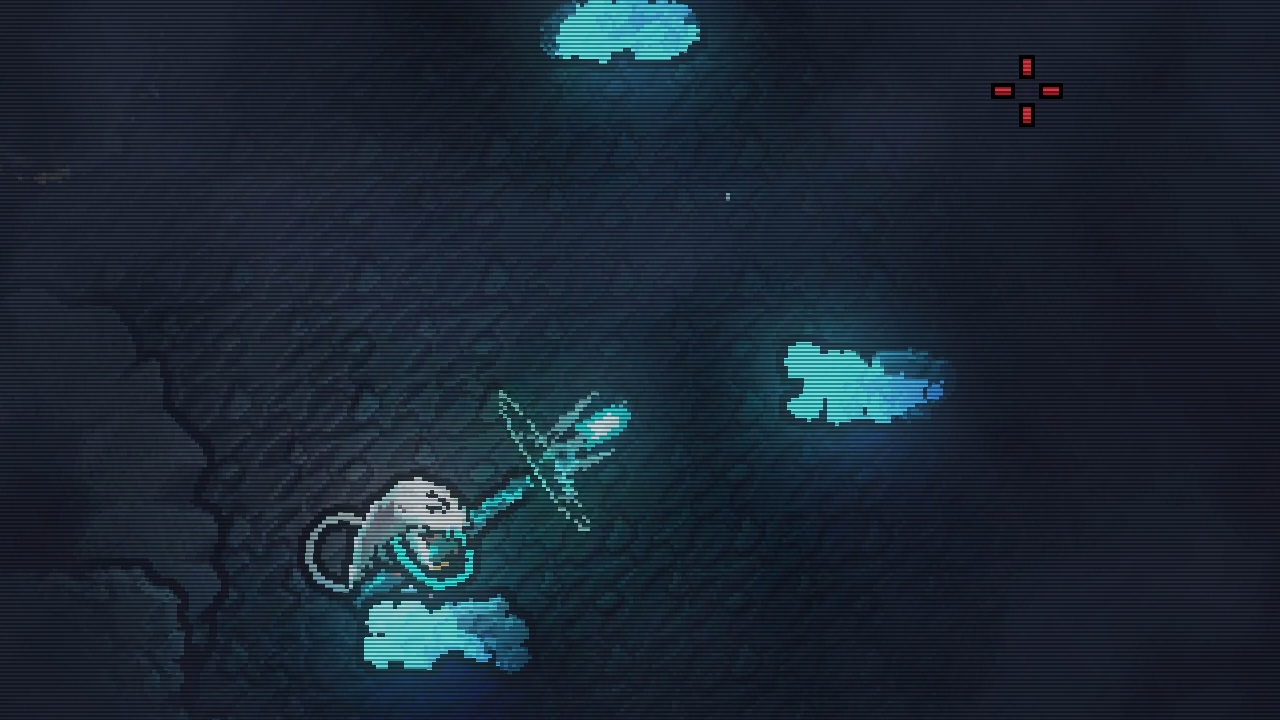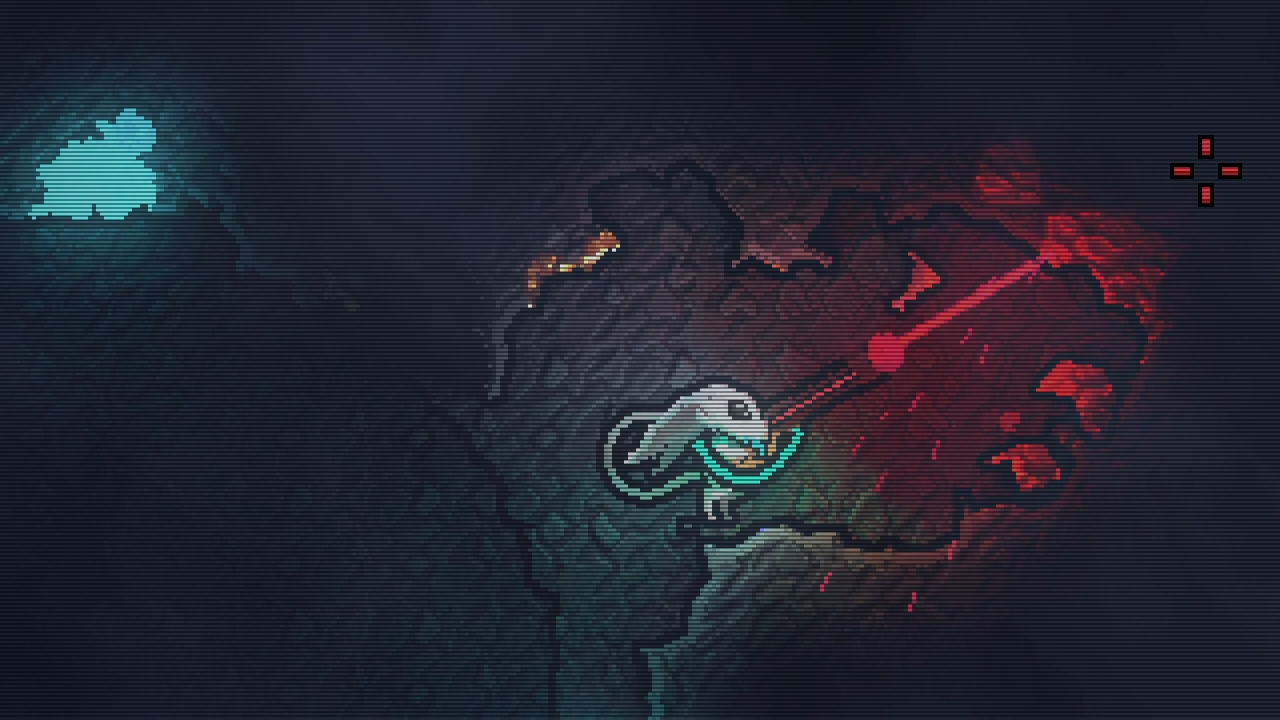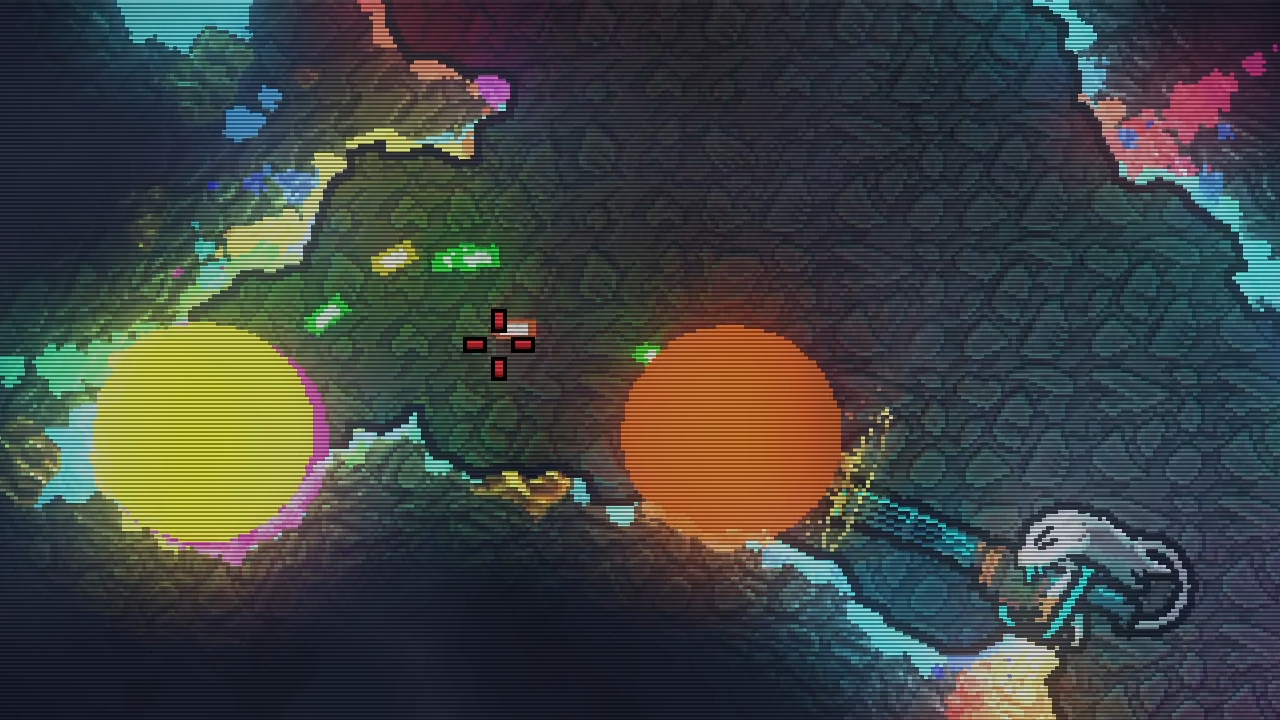Tainted Gun
Description
Tainted Gun is a 2D rogue-lite platformer, featuring a fully destructible environment with per-pixel terrain deformation. The game’s core mechanics revolve around guns that fire neon liquid, allowing the player to manually place light sources in order to explore dark cave systems. A secondary mining laser allows players to extract resources from the terrain, which are used for equipment crafting. The game incorporates pseudo random level generation using ingame map editors and a dynamic global illumination system for infinite light sources.



Development process
Tainted Gun started as a simple idea in a small game jam project that never saw the light of day. The concept was a puzzle game where the player had a limited number of light sources they could place to navigate the level. Though that project was abandoned, the idea stuck with me.
Years later, I participated in another game jam with the theme ‘Neon’. Remembering my old concept, I reimagined it as a shoot ‘em up platformer with a unique twist — the player’s gun not only dealt damage but also illuminated the world using glowing neon liquid. This new prototype had potential, and I decided to expand it into a full game.
Evolving the Lighting Engine
The lighting system has gone through several iterations:
- Version 1: Initially, I used a simple approach — applying a blur shader to the neon liquid texture and blending it into the game to simulate lighting.
- Version 2: To improve realism, I added a system that spawned raytraced light sources wherever the neon liquid touched surfaces. This created proper shadows but quickly became a performance nightmare, as players could place infinite light sources.
- Version 3 (Current): I implemented a 2D global illumination system, calculating incoming light for every pixel on the screen. This means the number of light sources no longer affects performance, resulting in a stable, visually appealing, and efficient lighting system.
Destructible Environments & Procedural Generation
Another feature I had always wanted to implement were fully destructible levels on a per-pixel basis, instead of using the traditional tile-based approach seen in most 2D sandbox games. Since my lighting system was already dynamic and independent of predictable geometry, it was the perfect opportunity to bring this idea to life.
For map generation, I opted for a hybrid approach — rather than fully random worlds, I designed handcrafted rooms that follow specific patterns. The generator assembles these rooms procedurally, allowing for controlled randomness while maintaining interesting level layouts. The cave walls are rendered as textures, then further refined using:
- Polygonal shaping for more organic edges
- Noise shaders for ore placement
- Thickness-based shaders to generate albedo and normal maps dynamically
Custom UI Framework & Future Plans
Since the engine I’m using lacks built-in UI support, I implemented my own custom UI framework, originally created for another project (Lizbox). This enabled me to build in-game map editors, making level design and testing far more efficient.
Tainted Gun is still far from completion, but the core mechanics are in place. Whenever I find the time, I continue tinkering with this passion project — refining the gameplay, improving performance, and adding new features.
